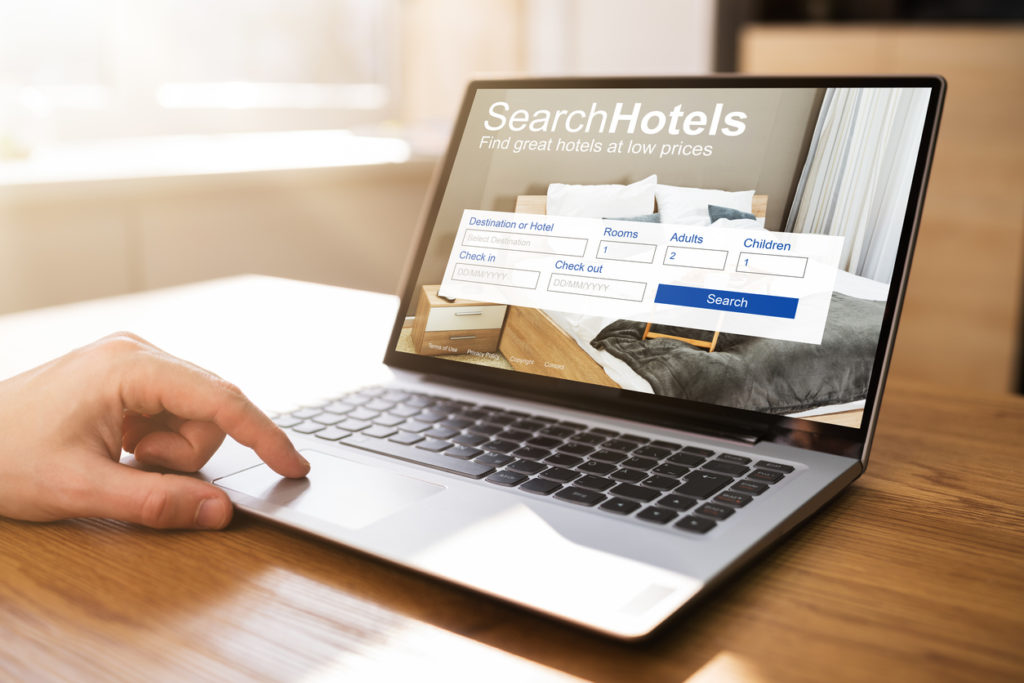Since the advent of OTAs and the now structural revolution in e-distribution, the Direct Sales VS OTAs match has been the talk of debates, conferences and, above all, Yield Meetings and sales meetings. Am I selling too much on OTAs? How much does direct selling cost me? What can I do legally to win back OTA customers directly?
This article aims to answer some of the legitimate questions asked by the hospitality industry. In particular, the role of Revenue Management in one of the major issues facing distribution. It will also enable us to clarify certain confusions between e-distribution, yield, OTAs and CRM. Confusions that we regularly encounter in our dealings with accommodation providers (hotels, campsites, hostels, tourist residences).
Revenue Management sorts demand or releases stocks if demand is not there
The title is deliberately caricatural. Let’s get away from this Manichean vision right away. In fact, each channel, if used properly, can be considered profitable for the hotelier, otherwise it’s not worth working with. So nobody is « bad ».
In practical terms, Revenue Management is nothing but common sense. The Revenue Manager’s main question is as old as business itself: « Are there people in front of my shop? » :
- If so, I risk a shortage, I « spill ». If we assume that the main entrance is my direct sales, it’s in my interest not to open the other doors if I have to pay commission.
- If not, because I don’t have enough demand, I’ll open all the doors. Post promotions and hope that my business introducers do well. Some of them may ask me to increase the commission by promising to go and find customers a little further away by diverting them from other shops. I don’t have to put my finger in that trap.
In this context, OTAs are not the enemy of RM. They bring visibility, their commission is known. They can bring in customers that our website doesn’t reach because they are translated and visible all over the world, and we can manage their opening calendar.
Pragmatism prevails. As with any partnership, you can’t expect to use your partner only when you need them. While hoping for exceptional exposure and boosted traffic on their page.
What are RM's Direct Sales actions?
Tactically, as we have said, RM is pragmatic. It is there to serve profitability. Nevertheless, strategically and in the structuring of his price-product offer, a Revenue Manager has the tools and levers to try to give his direct sales a competitive advantage:
- Make sure you have correctly segmented your pricing codes and your demand segments. This is the prerequisite for any sorting of demand. This will be useful for reporting purposes, but it is also essential for management purposes, in order to activate Openings and Closings at the right granularity (date x hotel or date x roomType).
- Creating acceptable price disparities (€10/night for 3 and 4 star hotels) will encourage customers who are hesitating between direct sales and OTAs. The latter have membership programmes and booking platforms that are often more efficient. Structurally, we advise you to have a reasonable policy in this area and not to try to raise the price by the amount of the commission. This can be done tactically. A French hotel giant has just allowed Revenue Managers to apply tactical price increases of +5 to +15% instead of closing down the OTAs.
- Introduce a disparity in the terms and conditions, for example, by making the conditions for Direct Sales Reception or Call Centre more flexible (less risk of cancellation as this is a more binding act of purchase).
- In the event of very high seasonal demand, RM can reserve the opening of sales to direct channels for a fortnight. This opening will be accompanied by marketing and CRM actions. Hoteliers and accommodation providers in the French Alps regularly use this practice, particularly to retain direct customers from across the Channel.

The importance of good coordination between Revenue Management, Sales, Marketing and Operations.
Fortunately, MR is not the only way to encourage direct sales and it is also the combination of MR, the choice of tools, Sales and Marketing that will enable decisions to be made that will benefit direct channels:
- Offer Add On products exclusively for direct sales,
- Encourage direct upgrades (using a CRM that allows this). To find out more about the impact of an alliance between your CRM and your RMS, we invite you to read our latest article and watch the replay of our joint conference with LoungeUp).
- Invest time in optimising the purchase path in your booking engine (BE).
- Technologically ensure that you provide the reception desk with at least the same prices as the customer can find on the OTAs. This means building your ecosystem around the PMS rather than the Channel Manager.
- If your territorial coverage allows, set up a loyalty system. Or join voluntary chains that give you visibility and offer your VD competitive advantages in specific markets.
RM's best practices are naturally at the service of direct marketing
Bottom-up rate management is accepted as « good practice » in Revenue Management. This good practice ensures a controlled ramp-up. But it also helps to avoid emergency price cuts (which are always more pronounced) or « panic » prices, which will always be to the advantage of channels with greater Last Minute leverage thanks to much larger marketing budgets. As the departure date approaches, customers will use OTAs as their search engine. The OTA therefore becomes the place where the customer’s panic buy meets the host’s panic price.
Where does RMS fit into all this?
The RMS gives you a graphical overview of demand. You can also prioritise thanks to a native system of filters and alerts. The RMS will enable you to build this Yield Ascendant strategy. This will ensure that you don’t over-react. And so that you don’t focus solely on the prices of competitors whose revenue management you don’t know. If, like revbell, the RMS is equipped with forecasts, it also recommends that you open or close tariff classes. And as you will have potentially segmented them with distribution, it will then fulfil its role as a decision-making tool… Serving direct sales. It will also enable you to illustrate the reasons for your optimisation to other departments. It will then be one of the tools that will enable perfect synergy between your departments.
In conclusion, investing in Revenue Management has many advantages. It will enable you to strategically and tactically create the conditions to encourage direct sales. Particularly in good times like the one we’ve been experiencing since the post-COVID recovery.
Keywords: OTA, Hospitality, Revenue Management, CRM, pricing, RMS, PMS


